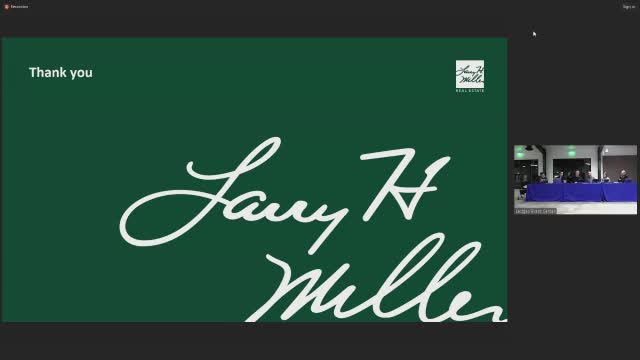Camas Valley community discusses housing development and its impact on local character
December 07, 2023 | Eastern Summit County Planning Commission, Summit County Commission and Boards, Summit County, Utah

This article was created by AI summarizing key points discussed. AI makes mistakes, so for full details and context, please refer to the video of the full meeting. Please report any errors so we can fix them. Report an error »

During a recent meeting of the Eastern Summit County Planning Commission, community members expressed significant concerns regarding a proposed development project that could reshape the region's landscape and demographics. The discussions highlighted the delicate balance between accommodating growth and preserving the community's character.
One of the primary issues raised was the potential influx of new residents due to the development, which some fear could lead to the "export" of local youth. A resident emphasized the need for affordable housing and job opportunities to retain young people in the area, stating, "We have to provide them with jobs and homes that are affordable so that they can stay in the county." This sentiment reflects a broader concern about maintaining the community's identity amidst increasing external migration.
Commission members acknowledged the complexity of the situation, noting that while the projected number of new homes is substantial, the actual impact may be less immediate. One member remarked, "We really can't talk about what would be the end result until we see those project land plans," suggesting that the community's response should be informed by detailed project proposals.
Concerns about construction-related disruptions were also prevalent, with residents pointing to the negative impacts of ongoing construction in nearby areas. The discussion included the need for "buffers" to mitigate these effects, drawing comparisons to successful strategies employed in Park City. However, the feasibility of such buffers without significant financial investment remains uncertain.
Another critical point of discussion was the architectural style of the proposed development. Residents expressed a desire for designs that harmonize with the rural landscape rather than imposing urban structures. One participant urged the developers to consider the community's aesthetic values, stating, "I would like to see architecture that blends in with the scenery."
The meeting also touched on the importance of maintaining a small-town feel, with concerns that the proposed density could transform the area into a "bedroom community" for larger urban centers. Participants questioned how the development would support local needs, including infrastructure and educational requirements, as they emphasized the importance of preserving the community's character.
In conclusion, the Eastern Summit County Planning Commission's meeting underscored the community's apprehensions about the proposed development. As discussions continue, the commission faces the challenge of balancing growth with the preservation of local identity and quality of life. Future meetings will likely delve deeper into these issues, as residents seek clarity on how the development will address their concerns and contribute positively to the community.
One of the primary issues raised was the potential influx of new residents due to the development, which some fear could lead to the "export" of local youth. A resident emphasized the need for affordable housing and job opportunities to retain young people in the area, stating, "We have to provide them with jobs and homes that are affordable so that they can stay in the county." This sentiment reflects a broader concern about maintaining the community's identity amidst increasing external migration.
Commission members acknowledged the complexity of the situation, noting that while the projected number of new homes is substantial, the actual impact may be less immediate. One member remarked, "We really can't talk about what would be the end result until we see those project land plans," suggesting that the community's response should be informed by detailed project proposals.
Concerns about construction-related disruptions were also prevalent, with residents pointing to the negative impacts of ongoing construction in nearby areas. The discussion included the need for "buffers" to mitigate these effects, drawing comparisons to successful strategies employed in Park City. However, the feasibility of such buffers without significant financial investment remains uncertain.
Another critical point of discussion was the architectural style of the proposed development. Residents expressed a desire for designs that harmonize with the rural landscape rather than imposing urban structures. One participant urged the developers to consider the community's aesthetic values, stating, "I would like to see architecture that blends in with the scenery."
The meeting also touched on the importance of maintaining a small-town feel, with concerns that the proposed density could transform the area into a "bedroom community" for larger urban centers. Participants questioned how the development would support local needs, including infrastructure and educational requirements, as they emphasized the importance of preserving the community's character.
In conclusion, the Eastern Summit County Planning Commission's meeting underscored the community's apprehensions about the proposed development. As discussions continue, the commission faces the challenge of balancing growth with the preservation of local identity and quality of life. Future meetings will likely delve deeper into these issues, as residents seek clarity on how the development will address their concerns and contribute positively to the community.
View full meeting
This article is based on a recent meeting—watch the full video and explore the complete transcript for deeper insights into the discussion.
View full meeting

